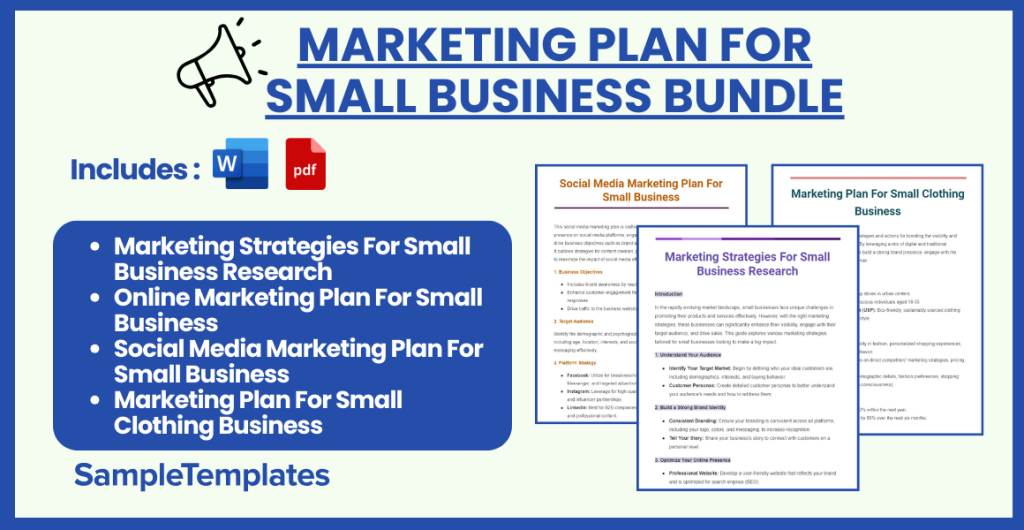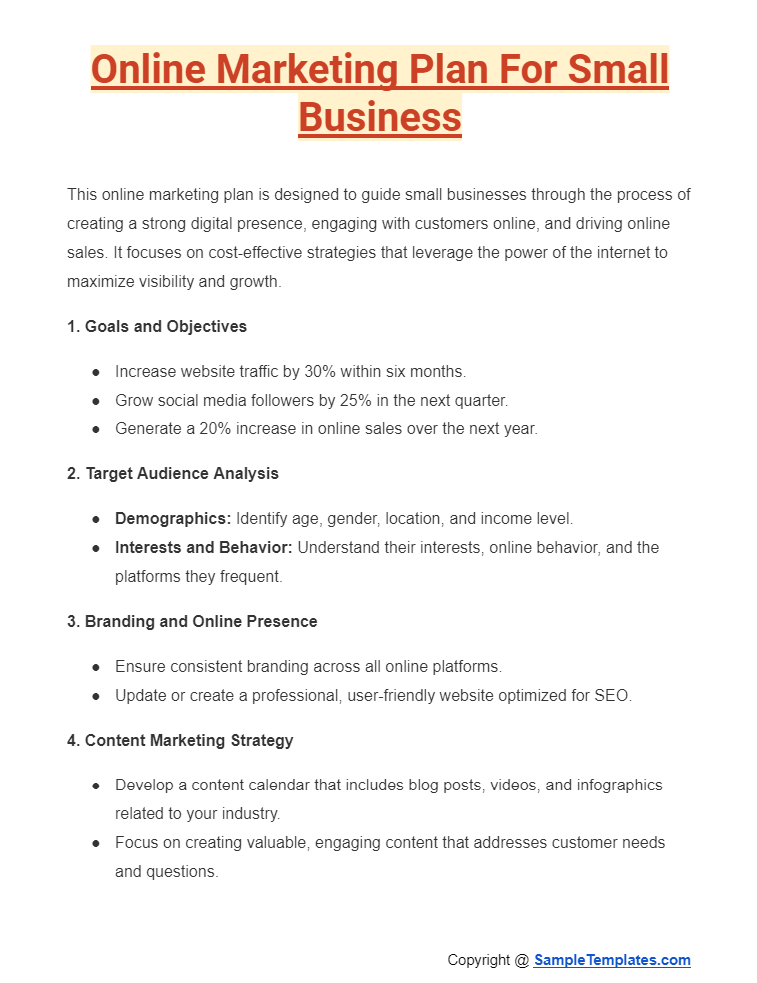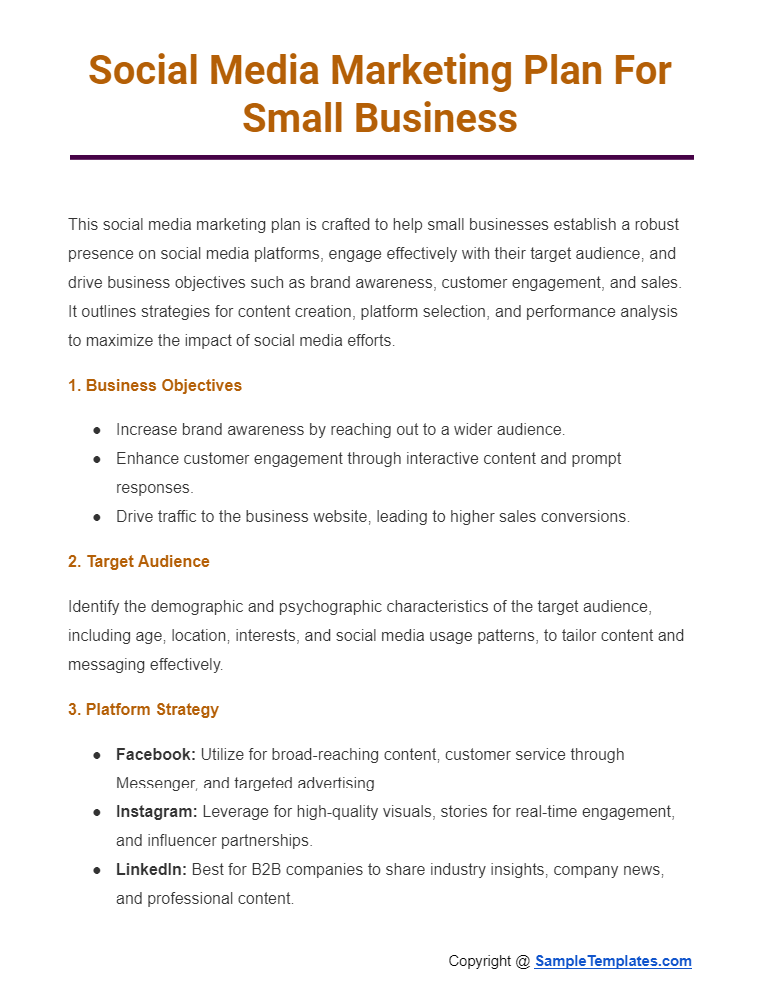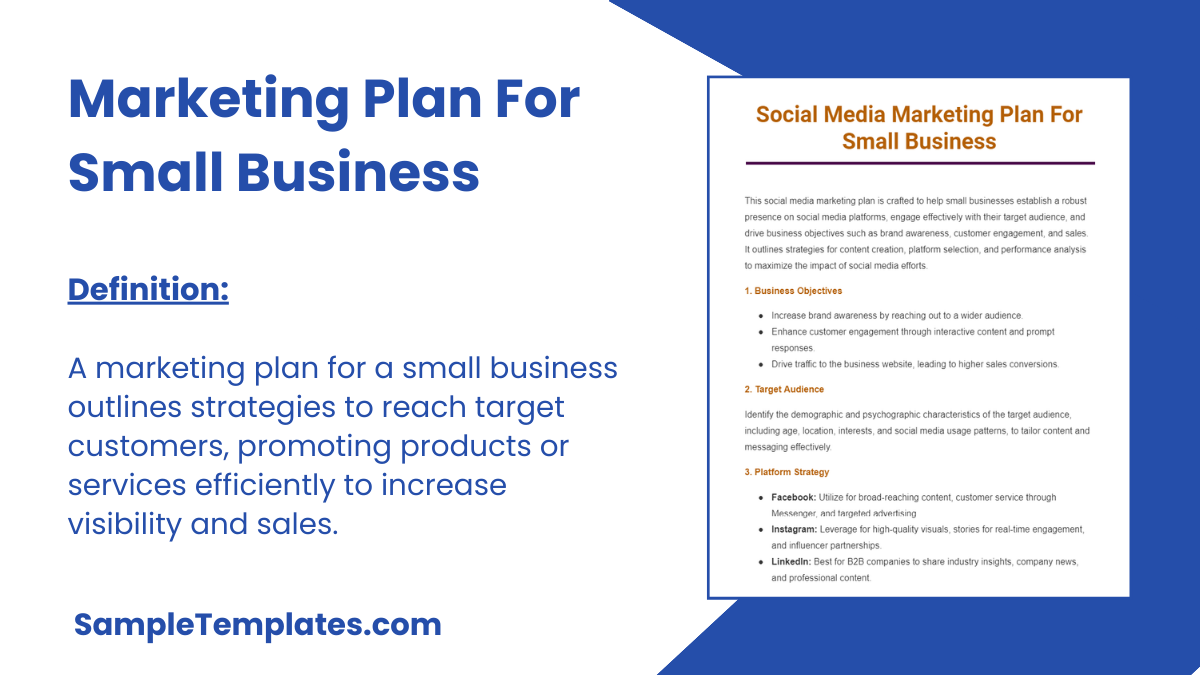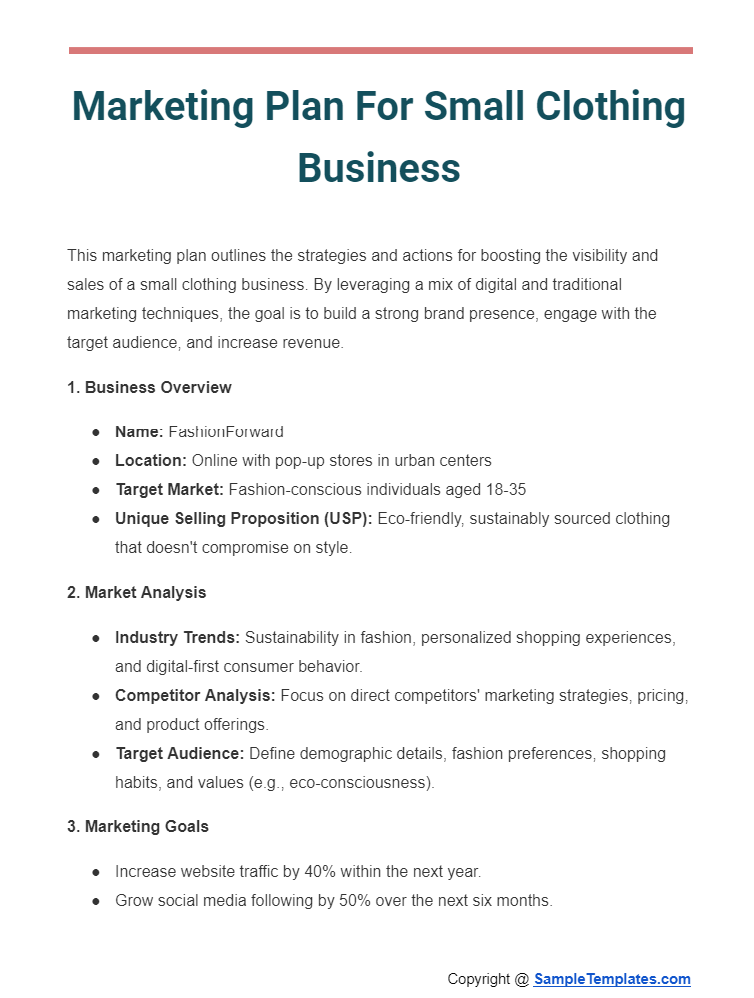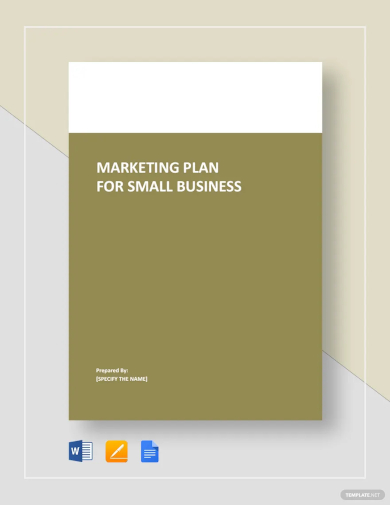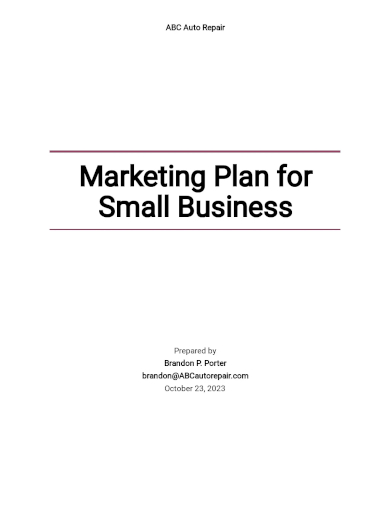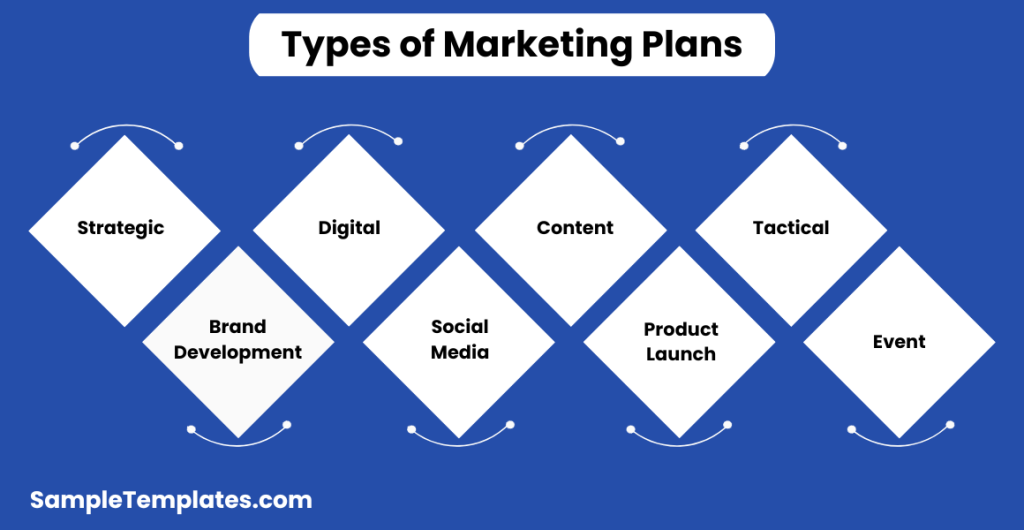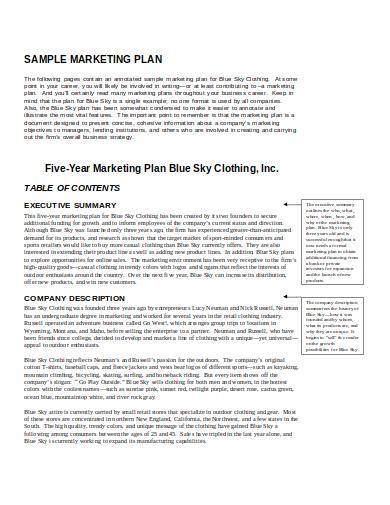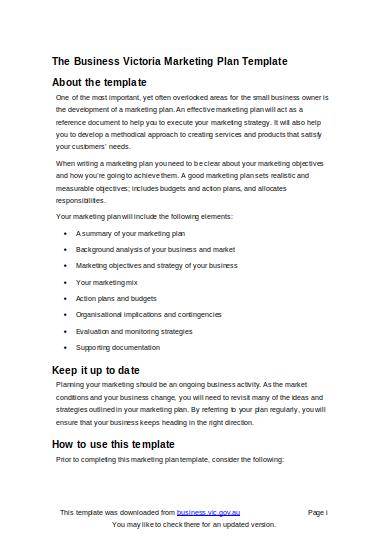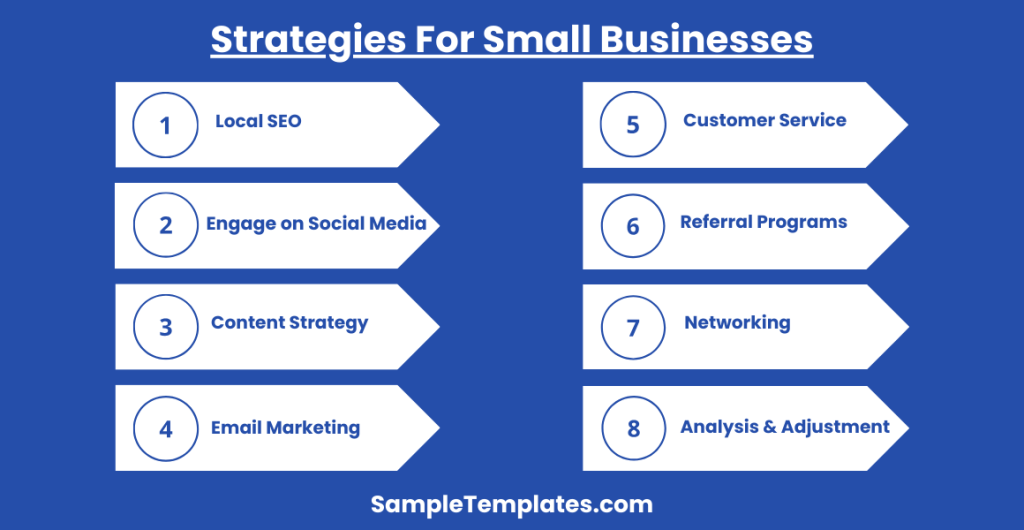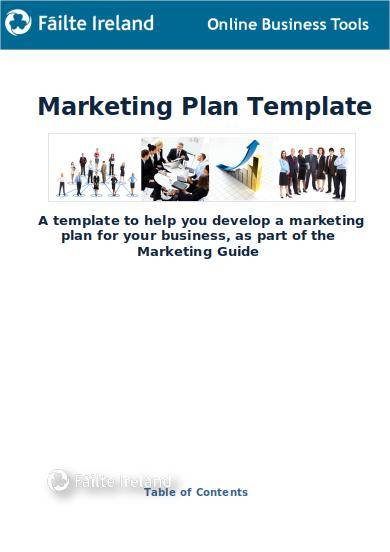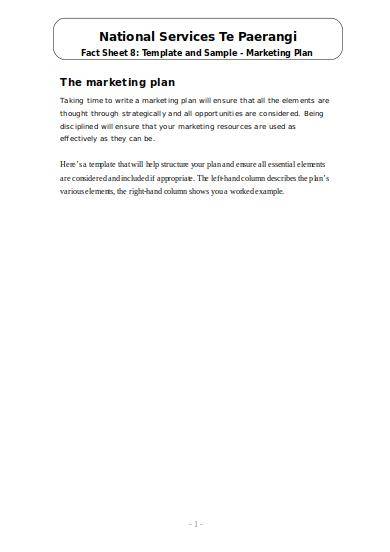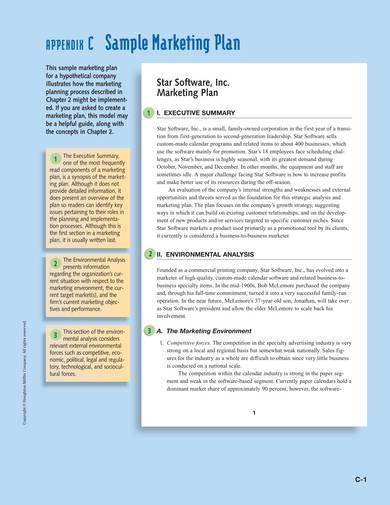This marketing plan outlines the strategies and actions for boosting the visibility and sales of a small clothing business. By leveraging a mix of digital and traditional marketing techniques, the goal is to build a strong brand presence, engage with the target audience, and increase revenue.
1. Business Overview
- Name: FashionForward
- Location: Online with pop-up stores in urban centers
- Target Market: Fashion-conscious individuals aged 18-35
- Unique Selling Proposition (USP): Eco-friendly, sustainably sourced clothing that doesn’t compromise on style.
2. Market Analysis
- Industry Trends: Sustainability in fashion, personalized shopping experiences, and digital-first consumer behavior.
- Competitor Analysis: Focus on direct competitors’ marketing strategies, pricing, and product offerings.
- Target Audience: Define demographic details, fashion preferences, shopping habits, and values (e.g., eco-consciousness).
3. Marketing Goals
- Increase website traffic by 40% within the next year.
- Grow social media following by 50% over the next six months.
- Boost online sales by 30% in the next fiscal year.
4. Marketing Strategies
A. Brand Identity
- Refine the brand’s visual elements (logo, color scheme) to ensure consistency across all platforms.
- Develop a brand voice that resonates with the target audience—friendly, knowledgeable, and eco-conscious.
B. Online Marketing
- Website Optimization: Ensure the website is mobile-friendly, easy to navigate, and SEO-optimized to rank higher in search results.
- Content Marketing: Create engaging blog content focusing on fashion tips, sustainability, and behind-the-scenes of the clothing production process.
- Email Marketing: Launch a monthly newsletter featuring new arrivals, fashion tips, and exclusive offers for subscribers.
C. Social Media Marketing
- Platforms: Focus on Instagram and Pinterest for their visual nature, crucial for fashion marketing.
- Influencer Collaborations: Partner with eco-conscious fashion influencers to reach a wider audience.
- Engagement: Regularly post interactive content (e.g., polls, quizzes) and respond to comments and messages to build a community.
D. Offline Marketing
- Pop-Up Stores: Organize pop-up stores in urban centers to create buzz and allow customers to experience the brand firsthand.
- Local Events: Participate in local fashion shows and eco-friendly events to increase brand visibility.
5. Budget Allocation
- Provide a detailed budget that outlines spending on digital ads, influencer partnerships, pop-up store logistics, and production of marketing materials.
6. Performance Metrics
- Track website analytics (traffic, bounce rate, conversion rate).
- Monitor social media engagement rates and growth.
- Measure sales growth linked to specific marketing campaigns.
7. Action Plan and Timeline
- Quarter 1: Focus on website and social media setup, initial SEO efforts, and launching the first pop-up store.
- Quarter 2: Begin influencer collaborations, optimize email marketing, and plan the second pop-up event.
- Quarter 3 & 4: Analyze performance, adjust strategies as needed, and explore additional offline marketing opportunities.
Conclusion
This marketing plan aims to position Fashion Forward as a leader in eco-friendly fashion by engaging with the target audience through a balanced mix of online and offline marketing strategies. By focusing on sustainability, quality, and style, Fashion Forward will not only attract fashion-conscious consumers but also build a loyal community around the brand’s values.
Browse More Templates On Marketing Plan For Small Business
Marketing Plan for Small Business Template
Free Simple Marketing Plan Template for Small Business
How to Develop a Small-Business Marketing Plan
Developing a marketing plan for a small business involves a series of strategic steps designed to identify and meet customer needs effectively, thereby boosting sales and ensuring the growth of the business. Here’s a step-by-step guide to creating a robust marketing plan:
1. Conduct Market Research
Start by gathering data about your industry, market trends, competitors, and target audience. Understanding who your customers are, what they need, and how they make purchasing decisions is crucial.
2. Define Your Target Audience
Based on your research, clearly define your target audience. Create detailed buyer personas to represent your ideal customers, including demographic information, behaviors, motivations, and pain points.
3. Identify Unique Selling Proposition (USP)
Determine what makes your business stand out from the competition. Your USP should highlight the benefits and features that make your product or service unique. You can also see more on Consultant Marketing Plan.
4. Set Marketing Goals
Establish clear, measurable, achievable, relevant, and time-bound (SMART) marketing goals. These could range from increasing brand awareness and generating leads to boosting sales or improving customer retention.
5. Choose Your Marketing Strategies and Tactics
Decide on the strategies and tactics that will help you achieve your goals. This may include content marketing, social media marketing, email marketing, SEO, PPC advertising, and more. Tailor your tactics to where your target audience spends their time.
6. Allocate Your Budget
Determine how much you can afford to spend on your marketing efforts. Allocate your sample budget across different channels and tactics based on their potential return on investment (ROI).
7. Develop Your Branding and Messaging
Your brand’s voice, message, and visuals should be consistent across all marketing materials and channels. This consistency helps build brand recognition and loyalty among your target audience.
8. Plan Your Content Strategy
Content is a key component of digital marketing. Plan your content strategy around topics that interest your target audience, including blog posts, videos, infographics, and social media content.
9. Implement and Execute Your Marketing Plan
With your plan fully developed, begin implementing your strategies and tactics. Use a content calendar to schedule and manage your marketing activities efficiently.
10. Monitor and Adjust
Use analytics tools to track the performance of your marketing efforts against your goals. Be prepared to adjust your plan based on what’s working and what isn’t. Continuous monitoring and flexibility are key to a successful marketing plan.
Developing a marketing plan for a small business requires time, research, and ongoing adjustment, but the payoff can be significant in terms of business growth and success. You can also see more on Small Business Plan.
Sample Auto Repair Marketing Plan Template
How to write a marketing plan for a business? A marketing plan doesn’t really have to be lengthy and wordy. It can also be made short but detailed. Only include the important details or points n your marketing plan that will help the business. Add charts or graphs paper if you must to easily present and explain data. Make your explanations short and simple. The sample auto repair marketing plan shown above only consists of three pages but it is able to successfully explain the goals and details of the business.
Types of Marketing Plans
Marketing plans can vary widely depending on the goals, the target audience, the channels used, and the nature of the business itself. Here are several types of marketing plans, each tailored to different strategic objectives and scenarios:
1. Strategic Marketing Plan
This comprehensive plan outlines the overall marketing strategy and goals of a business. It includes market research, target audience segmentation, positioning, and the marketing mix (product, price, place, promotion). It’s designed to align with the company’s strategic goals.
2. Tactical Marketing Plan
A tactical plan focuses on the execution of the strategic plan, detailing the specific actions, channels, tools, and resources required to achieve the marketing objectives. It often includes schedules, budgets, and specific campaigns or initiatives.
3. Digital Marketing Plan
This plan focuses on online marketing strategies and tactics, including SEO, PPC, content marketing, social media, email marketing, and digital advertising. It’s tailored to reach an audience online and capitalize on digital channels’ strengths.
4. Social Media Marketing Plan
A social media plan outlines the strategies for engaging with audiences on social platforms. It includes content planning, posting schedules, engagement tactics, and metrics for measuring the success of social media activities.
5. Content Marketing Plan
This plan revolves around the creation, publication, and governance of useful, relevant content aimed at attracting and retaining a clearly defined audience. It involves strategy for blogs, videos, ebooks, infographics, and more, to drive profitable customer action.
6. Product Launch Marketing Plan
Specifically designed for introducing a new product or service to the market, this plan outlines strategies for market research, audience targeting, messaging, channel selection, and promotional tactics leading up to and following the launch.
7. Brand Development Plan
Focuses on building or rebranding a company’s image and reputation. This plan includes identifying the brand’s core values, personality, messaging, and visual identity, as well as strategies for communicating the brand to the target market.
8. Event Marketing Plan
Outlines the strategy for promoting and hosting events, whether online or in-person. It covers event objectives, target audience, promotional tactics, logistics, sponsorships, and post-event follow-up.
9. B2B Marketing Plan
Designed for businesses that sell to other businesses, this plan focuses on lead generation, nurturing strategies, content marketing, and relationship building. It often emphasizes the importance of value propositions and ROI for business clients.
10. B2C Marketing Plan
Tailored for businesses that sell directly to consumers, this plan prioritizes understanding customer behavior, preferences, and emotional triggers. It typically focuses on broad reach and engagement strategies, customer loyalty programs, and direct sales tactics.
Each type of marketing plan serves a distinct purpose and requires different strategies and approaches. Selecting the right type depends on the business’s specific goals, resources, and target audience. you can also see more on Service Marketing Plan.
Clothing Business Marketing Plan Template
Want to promote your clothing business? Well, here is a marketing plan sample that you can check where you can get ideas on how you can market and advertise your products successfully. Of course, the sample will only serve as your guide and you may change the details as you please. A personalized approach to sample planning that is compatible to your style is always the best. The sample has notes and tips that you will find useful to make you write a better plan.
Sample Small Business Marketing Plan Template
When writing marketing plan, you will need to have knowledge on what should be included in a marketing plan. You will need to have a complete and detailed plan if you want things to work out the way you want. The plan is your form of preparation for the next step you will be doing. That is why it must include a marketing plan summary, your business details, market overview, marketing objectives, marketing strategy, etc. You will find all of that in this marketing plan template plus instructions and descriptions on how to write every detail of the content.
Blank Small Business Marketing Plan Template
Want a plan marketing plan that will make your life easy and convenient, but still useful and effective? As for that, nothing beats this blank small marketing business plan . What can this template offer? This sample template is available in Word which allows users to easily make changes or modify the contents of the plan based on their preferences. Why go through a lot of hassle when this sample template can offer you convenience at its finest? You should check it out now!
Strategies For Small Businesses
For small businesses aiming to thrive in their markets, implementing effective strategies is key. Here are eight powerful strategies designed to drive growth, enhance brand visibility, and improve customer engagement:
1. Leverage Local SEO
Optimize your online presence for local search. Ensure your business is listed in online directories, and utilize keywords that reflect your local area. Encourage customers to leave positive sample reviews on platforms like Google My Business to improve visibility and credibility.
2. Engage on Social Media
Identify which social media platforms your target customers use the most and establish a strong presence there. Share engaging content, interact with followers, and use targeted ads to reach a broader audience.
3. Develop a Content Marketing Strategy
Create valuable content that addresses the needs and interests of your target audience. Blog posts, videos, infographics, and podcasts can help establish your brand as a thought leader in your industry.
4. Use Email Marketing
Build an email list and engage your subscribers with regular updates, exclusive offers, and valuable content. Email marketing is a direct line to your customers and can drive sales, especially when personalized.
5. Offer Exceptional Customer Service
Outstanding customer service can set you apart from competitors. Responsive, helpful, and positive customer interactions can lead to repeat business and word-of-mouth referrals. You can also see more on Marketing Action Plan .
6. Implement Referral Programs
Encourage your satisfied customers to refer others to your business. Offer incentives for referrals, such as discounts or free products, to both the referrer and the new customer.
7. Network and Collaborate
Build relationships with other small businesses and local organizations. Networking can lead to partnerships, joint marketing efforts, and new customer referrals. Attend community events, join local business groups, and consider collaborative promotions.
8. Analyze and Adjust
Use tools like Google Analytics to track the success of your marketing strategies. Monitor key metrics such as website traffic, conversion rates, and social media engagement. Be prepared to adjust your strategies based on performance data to continuously improve your marketing effectiveness.
Implementing these strategies requires time and effort, but they can significantly impact your small business’s growth and success. Start with one or two strategies that align most closely with your business goals and customer base, and expand as you learn what works best for your unique situation. You can also see more on Content Marketing Plan.
New Small Business Marketing Plan Outline Template
An outline will give you a list of the parts or sections of the plan that you will need to make to ensure that all the parts are complete. If you need that kind of list then you should really go for this new small business marketing plan outline. Create a complete and detailed marketing plan using this outline and you will surely come up with a reliable and well-written plan of you own. Every section in this outline has instructions and descriptions that will help you write relevant and quality content.
Editable Marketing Plan Template
This marketing plan template is the kind that you want to keep and use over and over again. This customizable plan allows you to do a lot of things to it, like change the images in the title page, add your business analysis name and logo, write the your business’ motto, etc. To complete the template, you will need to supply all of the required information in the spaces provided for and there are also detailed description provided for every section. This plan should be right for your business.
Marketing Plan and Fact Sheet Template
Learn about marketing facts with this very reliable marketing plan sample and fact sheet. This sample is perfect for complete beginners or for those who want to become better and well-versed with writing a marketing plan. A table with two columns is provided where one column holds a description of what a particular section of the marketing plan is and the other column holds an example how that section is written. All 11 pages of this sample is customizable so you can add your own notes and research while scanning through the pages. You can also see more on Marketing Implementation Plan.
Key Elements of an Effective Business Marketing Plan
An effective business marketing plan is crucial for setting a clear path towards growth and success. Here are eight key elements that should be included to ensure your sample plan is comprehensive and actionable:
1. Executive Summary
An overview that succinctly summarizes the main points of your marketing plan, including objectives, strategies, and key actions. It should be compelling to encourage further reading.
2. Market Analysis
A detailed examination of the market environment in which you operate. This should include insights on your target market, customer demographics, needs, and buying behaviors, as well as an analysis of your competitors and their positioning.
3. Target Audience
Clear identification of your target audience segments. Define them in detail, including demographic, psychographic, and geographic traits. Understanding your audience is crucial for tailoring your marketing strategies effectively.
4. Marketing Goals and Objectives
Specific, measurable, achievable, relevant, and time-bound (SMART) goals that your marketing efforts aim to achieve. These might include increasing brand awareness, generating leads, boosting sales, or improving customer retention.
5. Marketing Strategies and Tactics
The approaches you’ll take to achieve your marketing objectives. This section should outline the marketing channels and tactics you plan to use, such as social media marketing, content marketing, email campaigns, SEO, and paid advertising.
6. Budget
A detailed budget that outlines how much you plan to spend on your marketing activities. Include a breakdown of expenses for different strategies and channels, ensuring it aligns with your financial projections and business goals.
7. Action Plan
A timeline of marketing activities and campaigns, including who is responsible for each task, key milestones, and deadlines. This helps ensure that your marketing efforts are well-coordinated and executed on schedule.
8. Metrics and KPIs (Key Performance Indicators)
Criteria for measuring the success of your marketing plan. Identify which metrics and KPIs you’ll track to assess the performance of your marketing activities against your objectives. Common metrics include website traffic, conversion rates, customer acquisition costs, and ROI (Return on Investment).
Incorporating these elements into your marketing plan will provide a solid foundation for your marketing efforts, offering a strategic approach to achieving your business objectives. You can also see more on Annual Marketing Plan.
Sample Software Marketing Plan Template
Use this software marketing plan sample as your guide or as a sample reference material to help you complete the plan that you are writing, especially if your writing about something similar. Here you will learn about the essential parts of a marketing plan and ensure that yours won’t be missing any details. You can also see more on Marketing Project Plan.
Simple Small Business Marketing Plan Template
You can never go wrong with simple marketing plan templates. That is because they are safe to use and you can add or incorporate your own style and ideas to it. You don’t always have to stick to everything that is n the template that way you can add a personal touch to the plan you are making.
Small Business Marketing Ideas Template
Get tons of marketing ideas using this small business marketing ideas sample. You can learn different marketing process styles, strategies that you can use as your own, wordings, etc. You definitely can’t run short of ideas so you better check out this sample now!
What is marketing plan for small business?
A marketing plan for a small business is a strategic roadmap that outlines goals, target audience, promotional tactics, and budget allocation to effectively promote products or services and achieve business objectives.
What is mini marketing plan?
A mini marketing plan is a concise strategy outlining key marketing objectives, target audience, messaging, channels, and tactics for a specific project or short-term campaign, typically condensed for swift execution and focus.
How do I create a marketing plan for my small business?
To create a marketing plan for your small business, define your target audience, set clear objectives, choose appropriate marketing channels, develop compelling messaging, and track results to refine strategies for success. You can also see more on Retail Marketing Plan.
Why Is small business marketing important?
Small business marketing is vital as it helps establish brand awareness, attracts customers, drives sales, fosters customer loyalty, and enables businesses to compete effectively in their market, ultimately leading to growth and success.
What mistakes should you avoid when creating your marketing plan?
When creating a marketing plan, avoid these mistakes: neglecting target audience research, overlooking competition analysis, setting unrealistic goals, ignoring budget constraints, lacking clear metrics for success, and failing to adapt to market changes. You can also see more on Brand Marketing Plan.
In conclusion, a well-crafted marketing plan is essential for small businesses to thrive. By setting clear goals, targeting the right audience, and executing effective strategies, success is within reach.
